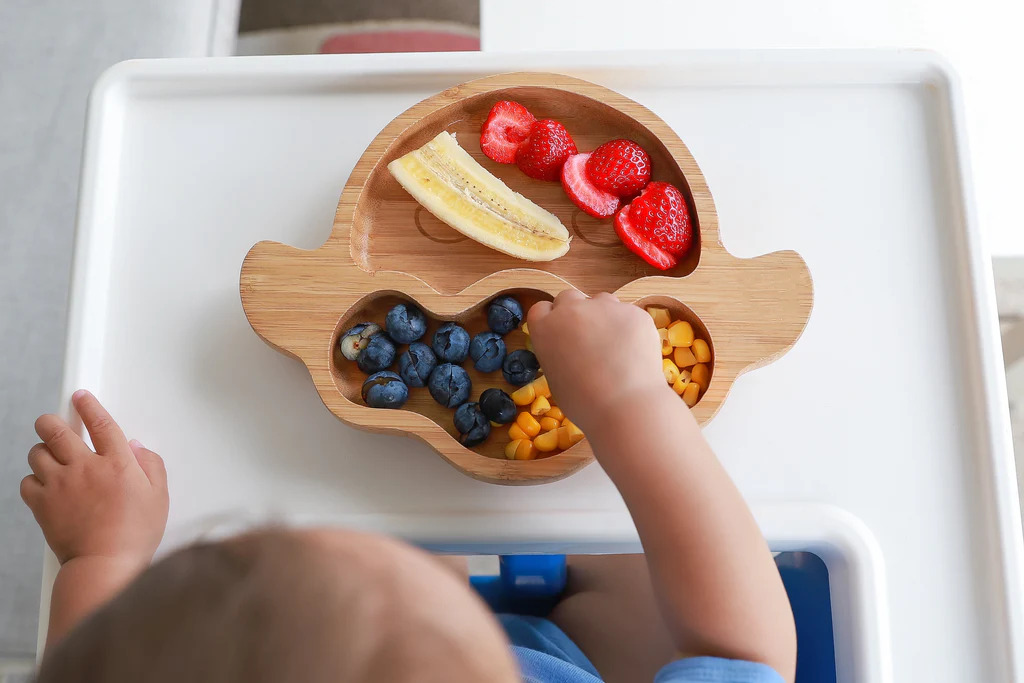Babies are usually exclusively breastfed in the first 6 months. After that, along with breastfeeding, they are introduced to appropriate complementary food. Moreover, feeding a baby can be a bit tough since the risk of choking is higher.
Therefore questions like how to cut food for baby, are regularly asked, especially by new parents. For that matter, dive into this article and learn how to do it easily.

How to Cut Food for Baby
So, how to cut food for baby? The short answer to this common question is to either cut it into small or long thin pieces. Also, you can shred it so it can be safe for eating. This all depends on the type of food itself and your baby’s age.
In addition, the goal of feeding your baby solid food is for it to learn how to chew. So, the food must be large enough so that your baby can pick it up and hold it independently. On another hand, the texture of the food must be moderately soft too.
Continue to read and discover how to prepare food according to your infant’s age. Additionally, I have included advice on which food your baby shouldn’t eat.
If your baby is around 6 months old
As I previously said, babies are introduced to complementary food as soon as they turn 6 months. However, at this age, they still haven’t formed their pincer grasp. By this, I mean that they are still not able to hold something between their thumb and their first finger.
That’s why you should cut the food into long thin pieces. Additionally, take your pinky finger for proper measurement. Regarding the food, almost everything is acceptable except honey and choking hazards like seeds and nuts.
You can start with vegetables and fruits. The list includes apples, pears, broccoli, potatoes, carrots, etc. Besides cutting them into long pieces, you can also blend or smash them. Cooking them until they’re soft is a good alternative too.
Also, you can introduce eggs and meat to your 6-months old baby. The best way to prepare an egg is to hard boil it and then smash it. Moreover, you can mix it with breast milk or water. But you mustn’t add salt or sugar.
When it comes to the meat, cook it until it is no longer pink. Afterwards, cut it into very thin slices. What’s more, you can shred it or offer your baby bite-sized pieces.
Read More: How to Cut Strawberries for Baby
If your baby is from 8 to 10 months old
Wondering how to cut food for baby as it turn 8 months old? Typically, as they grow older, their pincer grasp is developed. This means that at this age, they are now capable of holding food independently. Therefore, when it comes to preparing it, you can cut the food into smaller pieces.
In addition, you can cut them to an approximate size of a chickpea. Moreover, when it comes to preparing small round food like blueberries and similar, then you must smash it before feeding your baby.
For your baby to get used to the change, you can mix both sizes. By this, I mean that you can serve your baby small pieces for them to practice their pincer grasp. On the other hand, you can also continue giving your baby long, thinly sliced pieces from time to time.
Next, at this age, you can also start feeding your infant with a spoon. So, soups, pasta, and mashed meals are excellent options for that. Also, this way, your baby will get even more used to the idea of eating independently.
Types of Food You Mustn’t Give to Your Baby
As you learn how to cut food for baby, you must also pay attention to the risk of choking which is higher when feeding your baby. This is tightly connected to the fact that babies can’t properly chew food. In addition, they typically develop teeth between 6 and 12 months.
Therefore, you must be very careful when choosing food for your infant. What’s more, besides properly cutting the food, there is some food you must avoid. The list includes seeds, nuts, lollipops, grapes, popcorn, marshmallow, corn chips, and similar. Also, your baby mustn’t eat raw apples and raw carrots.
Besides some raw food, uncooked food is also considered a choking hazard. This usually refers to uncooked peas, eggs, and similar small round food. Also, honey, salt, sugar, and rice drinks must be avoided.
In addition, you must be careful when feeding your baby pieces of chicken and fish. This is because they typically come with smaller bones. So make sure when they are all removed before you offer the meat to your baby.
So, in general, any food that is round, small, firm, or slippery can increase the risk of choking. They can easily get stuck in the breathing tube, so don’t offer them to your baby.
What to do if your baby starts to choke?
Speaking of choking hazards, it’s very important to know how to respond quickly if your baby is choking. In that case, hold your baby’s face down. Secondly, hit them strongly on the back up to 5 times.
Also, you can turn your baby over to face upward. Then you should place two of your fingers below the nipples of your baby. Additionally, put your fingers in the middle of their chest. Next, push downwards up to 5 times.
Call the emergency number if your baby is still unable to breathe well.
Related: How To Keep A Baby Awake During Feeding
Conclusion
Feeding your baby can seem a bit complicated at first. But, as you can see, it doesn’t have to be a mission impossible. All you have to do is learn how to properly cut and prepare their food. Don’t forget that the food must be moderately soft too.
When picking the right food, start with natural choices. In addition, be careful with the food that is considered a choking hazard. So, following simple rules can help you learn how to cut food for baby and make the feeding process comfortable for you and your baby.







